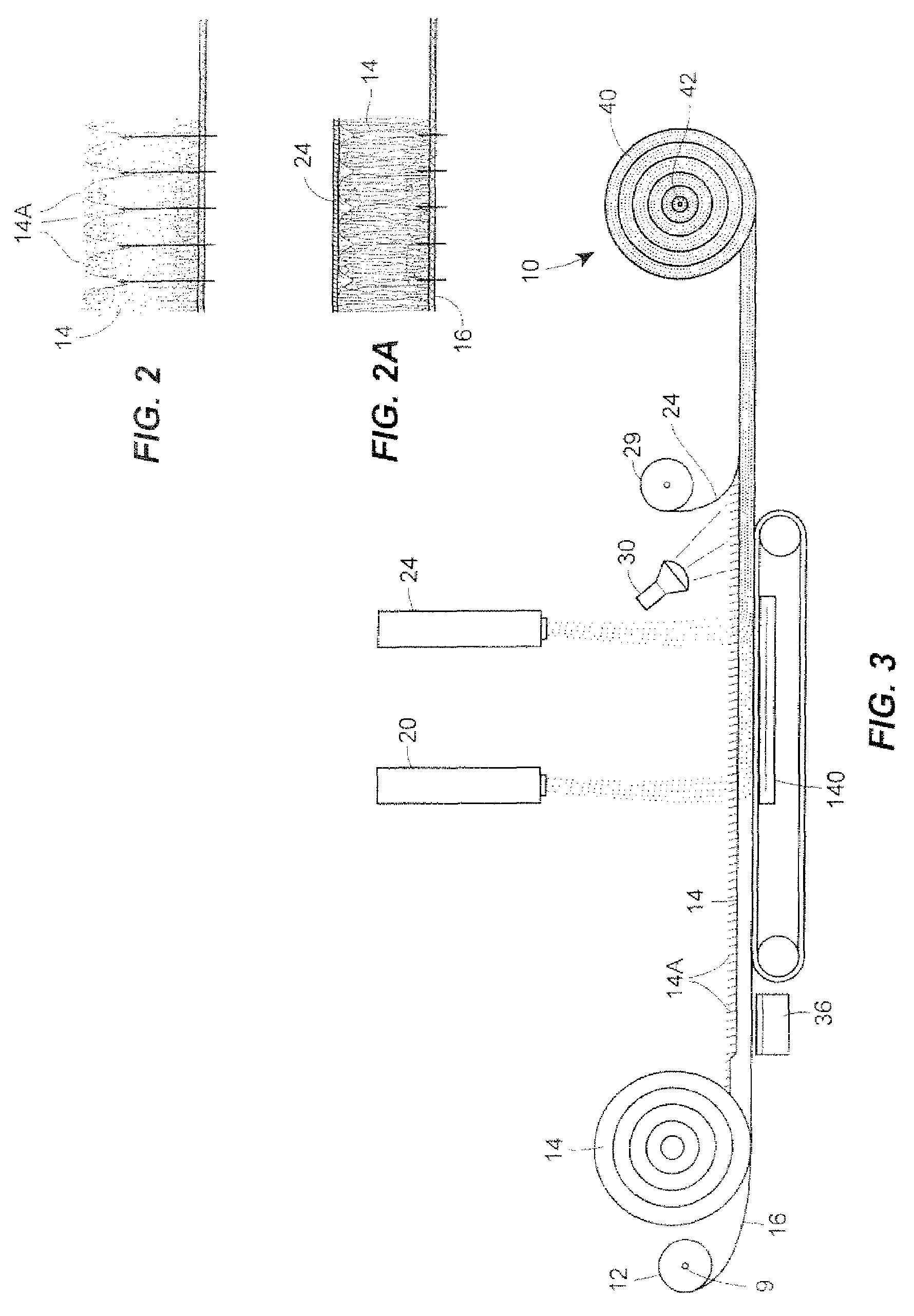Contaminant-reactive geocomposite mat and method of manufacture and use
a geotextile and reactive material technology, applied in the direction of loose filtering material filters, gravity filters, adhesive processes with surface pretreatment, etc., can solve the problems of restricting gaseous and aqueous flow through the mat, difficult deployment of separate geotextiles and reactive materials through water columns, etc., to increase the density of reactive materials, reduce thickness, and increase the density of geotextile fibers. high loft
- Summary
- Abstract
- Description
- Claims
- Application Information
AI Technical Summary
Benefits of technology
Problems solved by technology
Method used
Image
Examples
Embodiment Construction
[0026]Turning now to FIG. 1, there is shown a schematic diagram for a preferred embodiment of manufacturing the geocomposite articles 10 described herein, including many optional features any one or more of which can be included in the manufacturing process to provide various characteristics and properties to the geocomposite articles.
[0027]As shown in FIGS. 1 and 3, the preferred geocomposite article 10 is manufactured to include a layer of woven or non-woven liquid-permeable outer geotextile sheet material layers on both major exterior surfaces; various optional reinforcing material can be included within the interior and / or exterior of the article to provide structural reinforcement or to provide various degrees of article rigidity; portions of the high loft geotextile, preferably made from thermoplastic fibers, e.g., a polypropylene, having inter-tangled, non-woven fibers that are at least 5 cm. long, wherein the high loft geotextile remains very porous to allow for flow-through...
PUM
| Property | Measurement | Unit |
|---|---|---|
| size | aaaaa | aaaaa |
| opening size | aaaaa | aaaaa |
| thickness | aaaaa | aaaaa |
Abstract
Description
Claims
Application Information
 Login to View More
Login to View More - R&D
- Intellectual Property
- Life Sciences
- Materials
- Tech Scout
- Unparalleled Data Quality
- Higher Quality Content
- 60% Fewer Hallucinations
Browse by: Latest US Patents, China's latest patents, Technical Efficacy Thesaurus, Application Domain, Technology Topic, Popular Technical Reports.
© 2025 PatSnap. All rights reserved.Legal|Privacy policy|Modern Slavery Act Transparency Statement|Sitemap|About US| Contact US: help@patsnap.com



